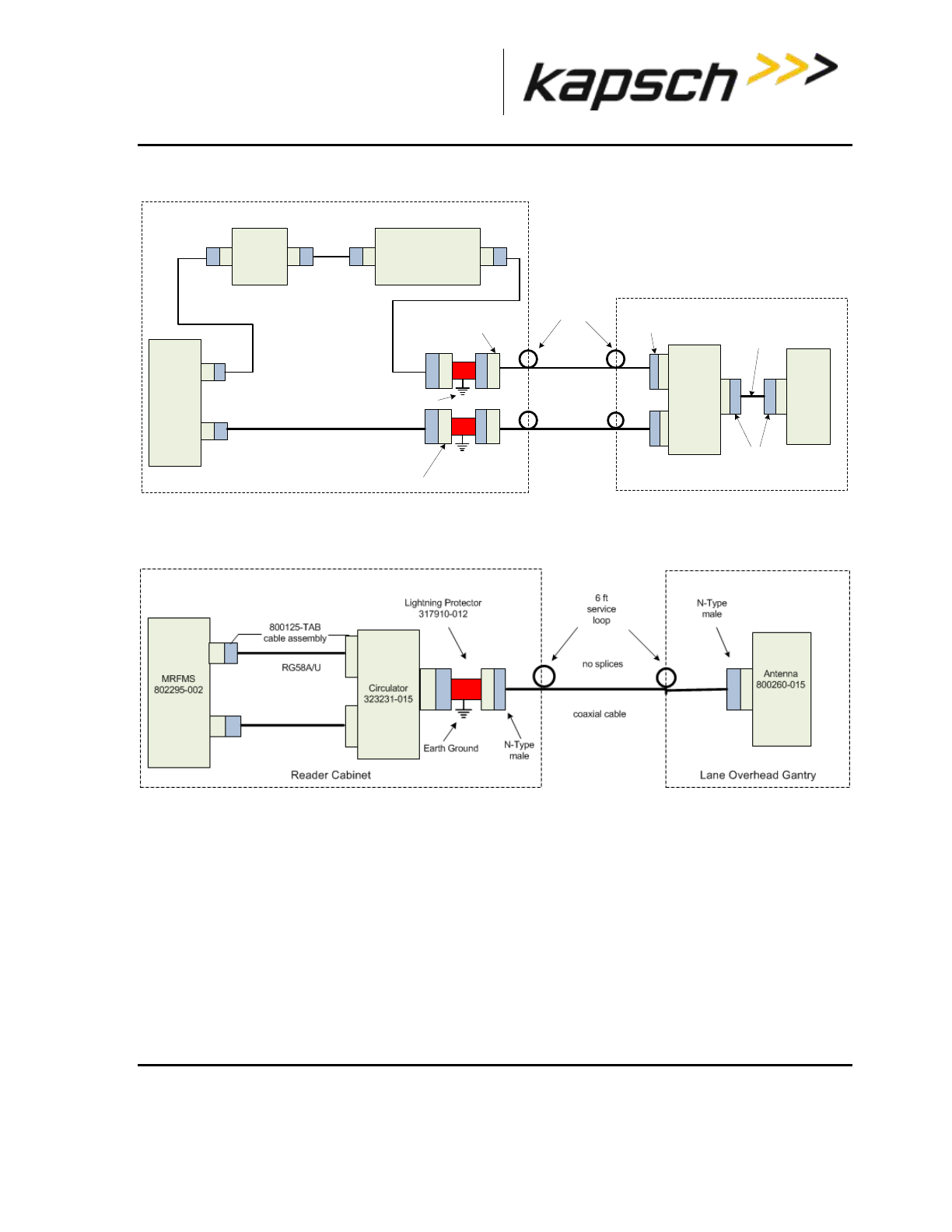Operations and Maintenance Manual

_
JANUS
®
Multi-Protocol Reader Ver. 2: Maintenance Instructions
Confidential UM 360450-210 Revision C Page 175 of 288
© Kapsch TrafficCom Canada Inc. 2014
These drawings and specifications contain confidential and proprietary information and are the property of Kapsch TrafficCom Canada Inc. and are issued in strict
confidence and will be kept confidential and used solely for the purpose intended and for no other purpose and shall not be transmitted, reproduced, copied, and/or
used as the basis for manufacture or sale of apparatus unless otherwise agreed to in writing by Kapsch TrafficCom Canada Inc.
FILE: UM 360450-210 REV C JANUS MPR2 OPERATOR-MAINTENANCE MANUAL.DOCX 08/17/2015 11:42
Kapsch TrafficCom
Figure 5-7: RF Cable Installation Schematic Bi-Static Operation with RF Amplifier
RG58A/U
MRFMS
802295-002
N-Type
male
Antenna
800260-015
T
X
Reader Cabinet
Lane Overhead Gantry
Earth Ground
R
X
6 ft
service
loop
coaxial cable
no splices
N-Type
female
Circulator
323231-015
Coaxial cable
802484-001 (909-921.5 MHz)
802484-002 (902-904 MHz)
LMR-400-DB
322389-013
N-Type
male
Lightning Protector
317910-012
30dB
Attenuator
RF Amplifier
802745-001
Figure 5-8: RF Cable Installation Schematic Bi-Static TDM/6C Only Operation
Performing Lane Tuning
Lane Tuning consists of selecting the frequencies to be used on the channels and setting the
attenuation for the channels to control the ERP of the reader. These are configured using the web
interface. It is recommended that Kapsch Operations Group perform lane tuning to properly configure a
site. If the integrator/operator wishes to perform the lane tuning, the following guidelines apply:
The same FDM channel frequency should not be used on adjacent lanes (including straddle and
shoulder).
The same TDM channel from 2 synchronized readers should not be used on adjacent lanes
(including straddle and shoulder).










